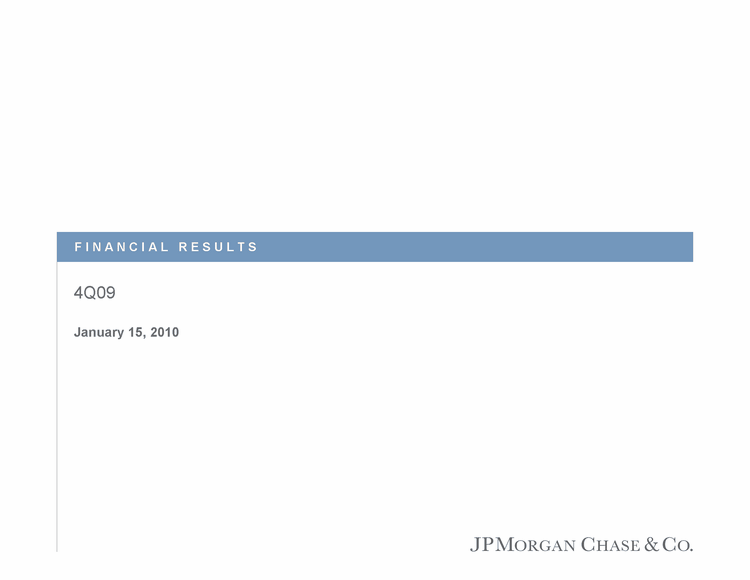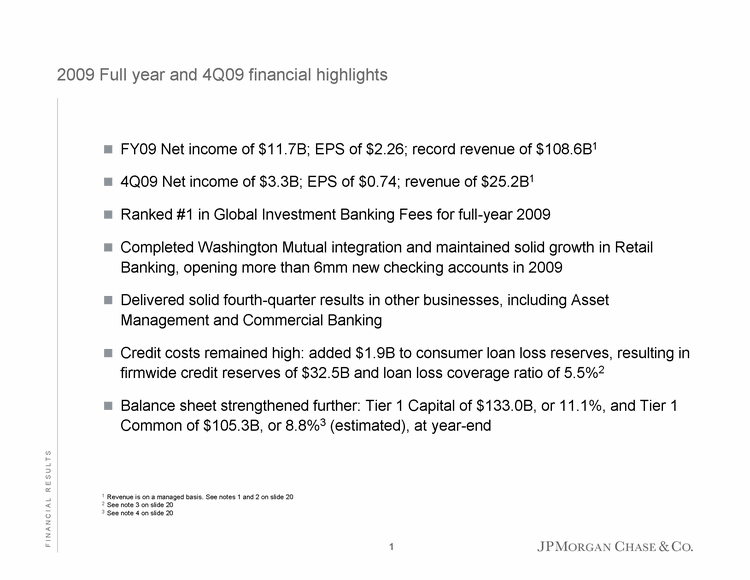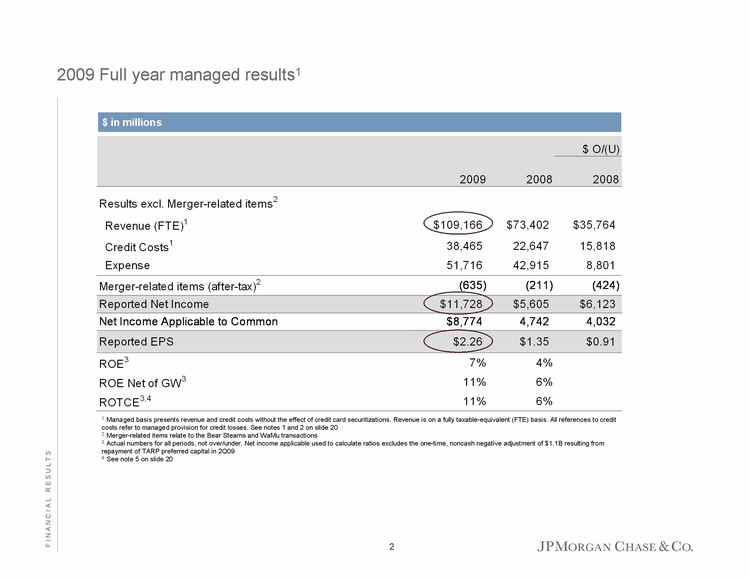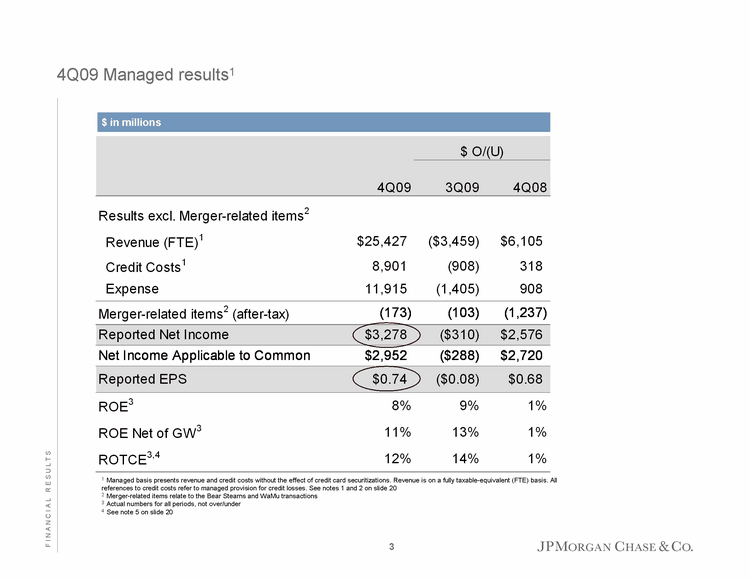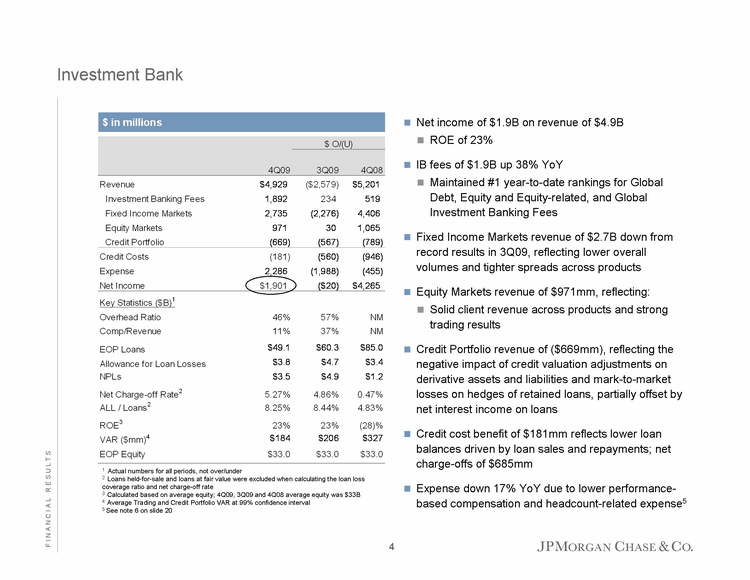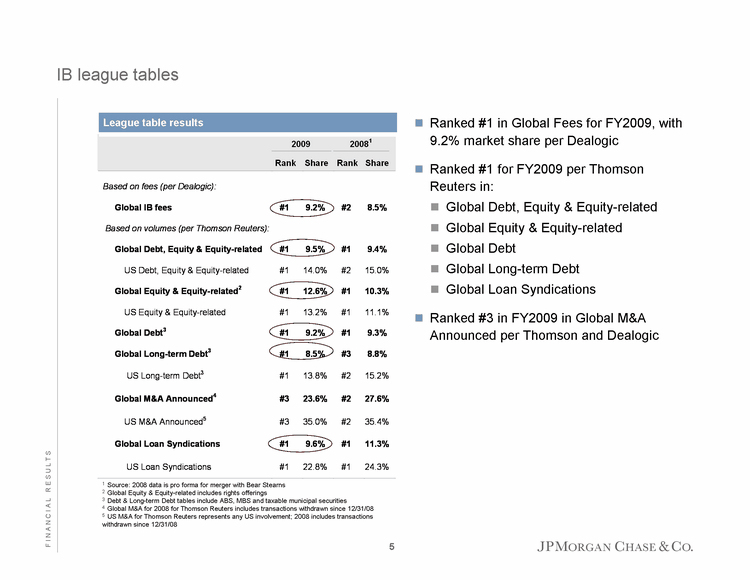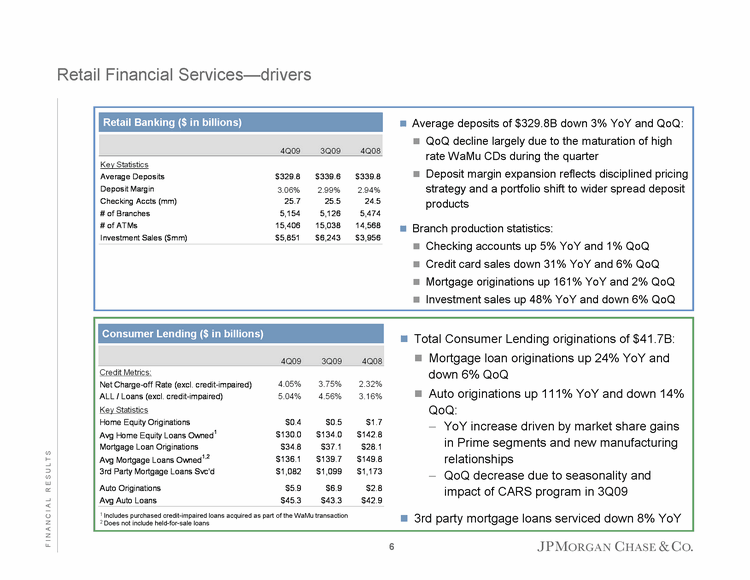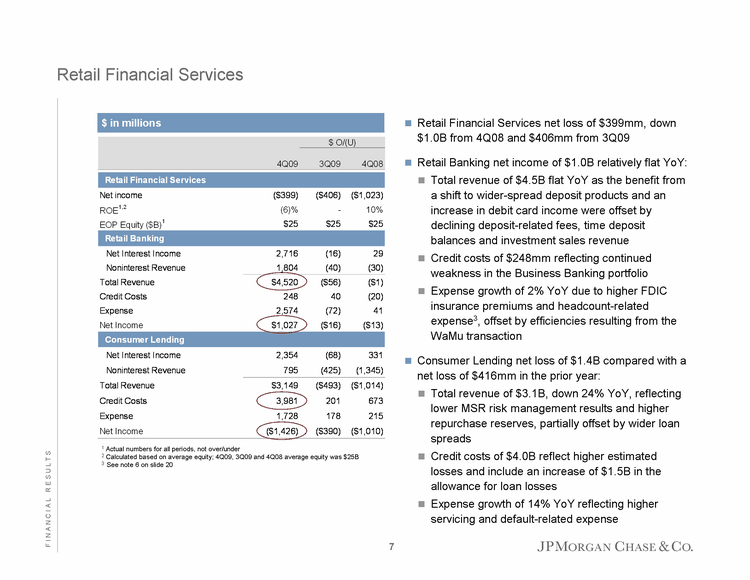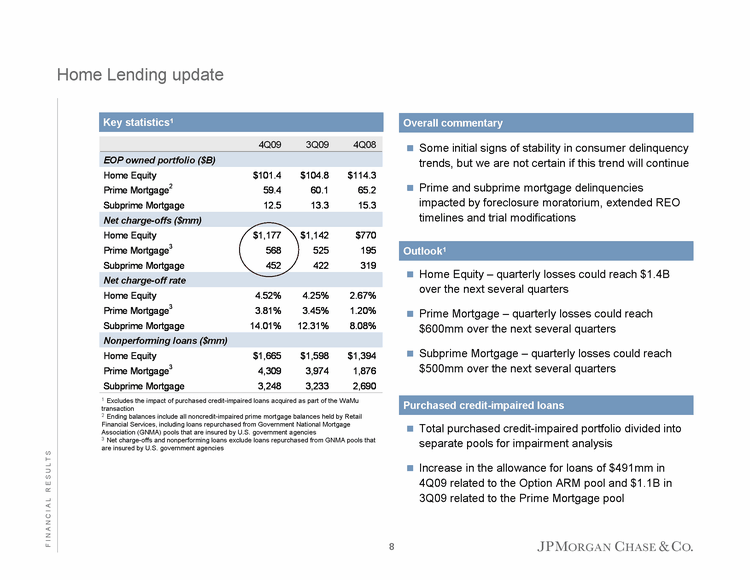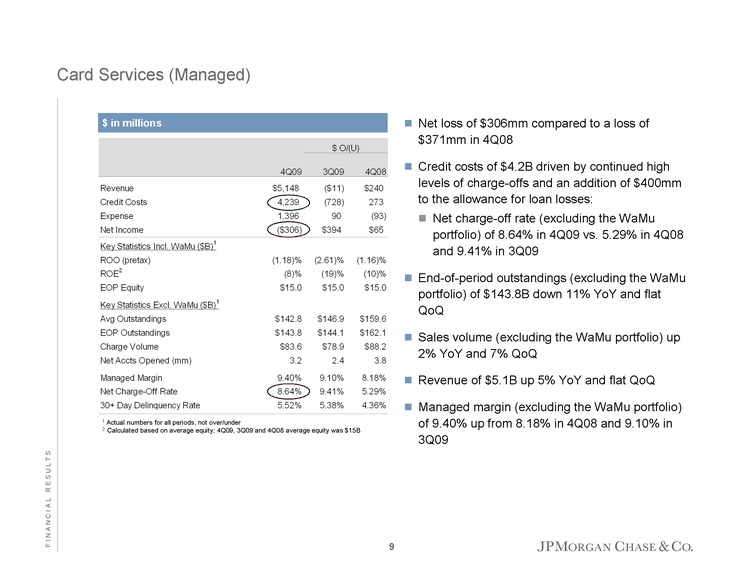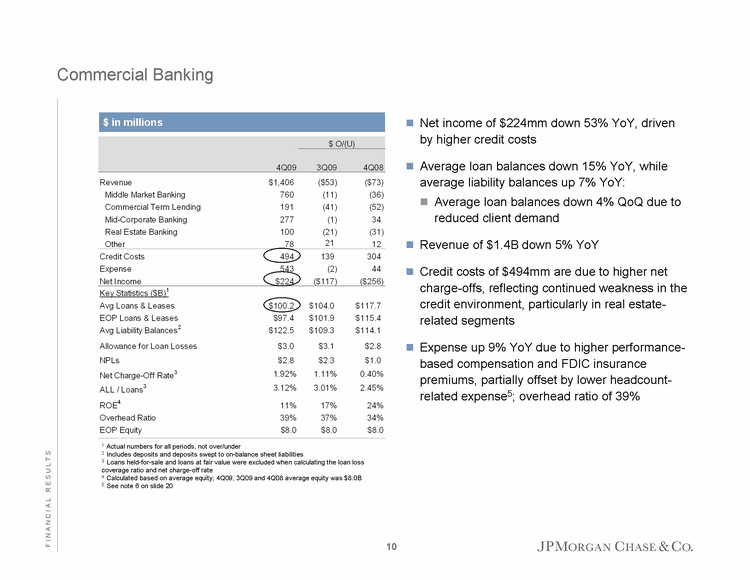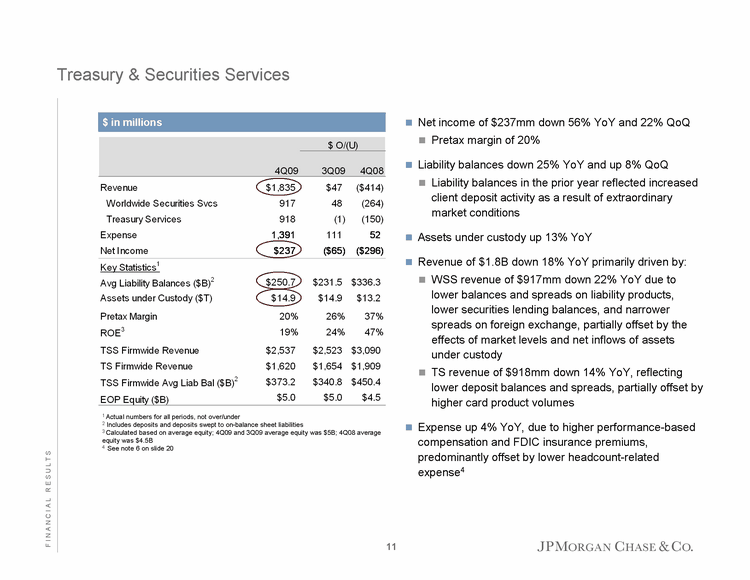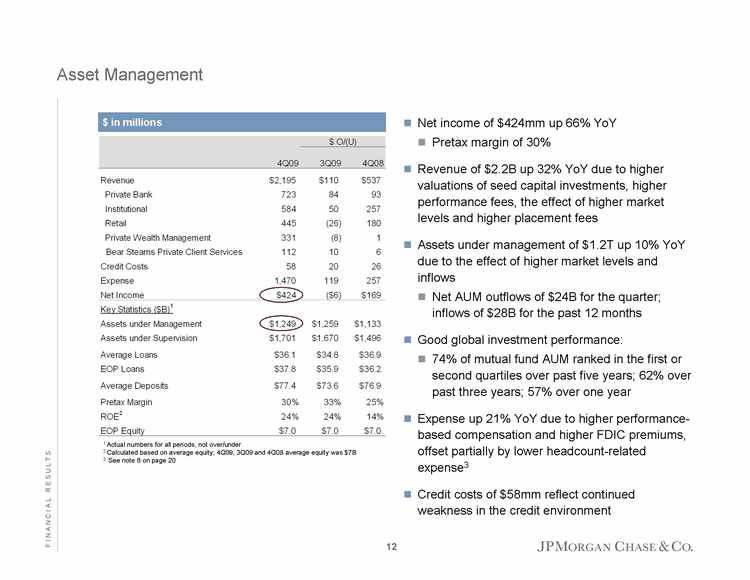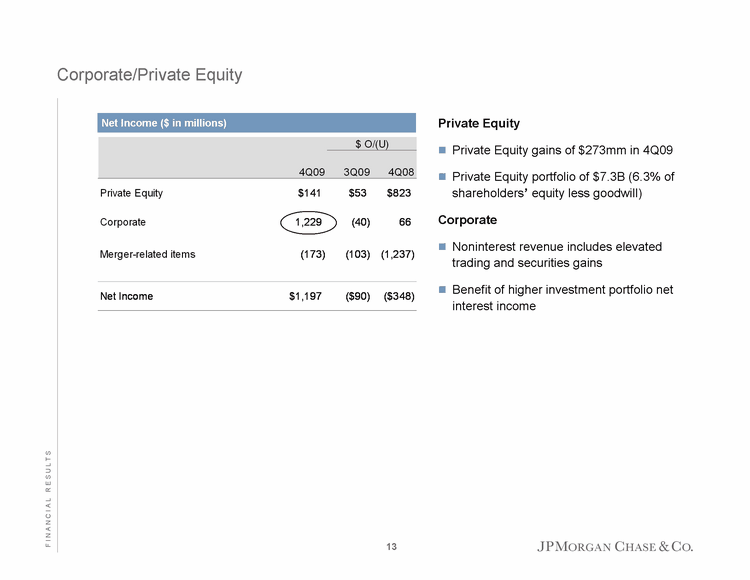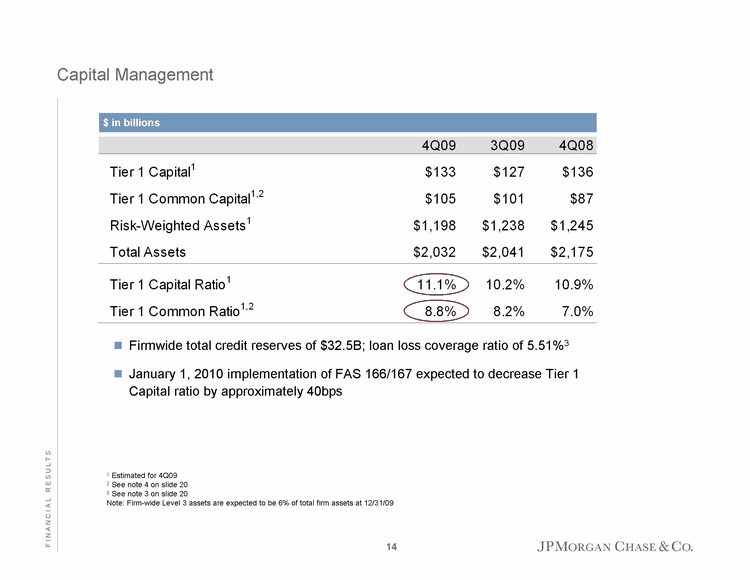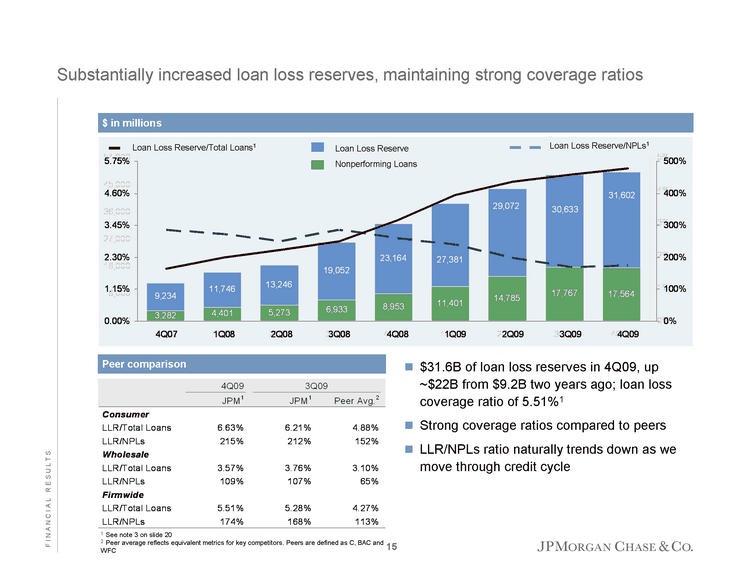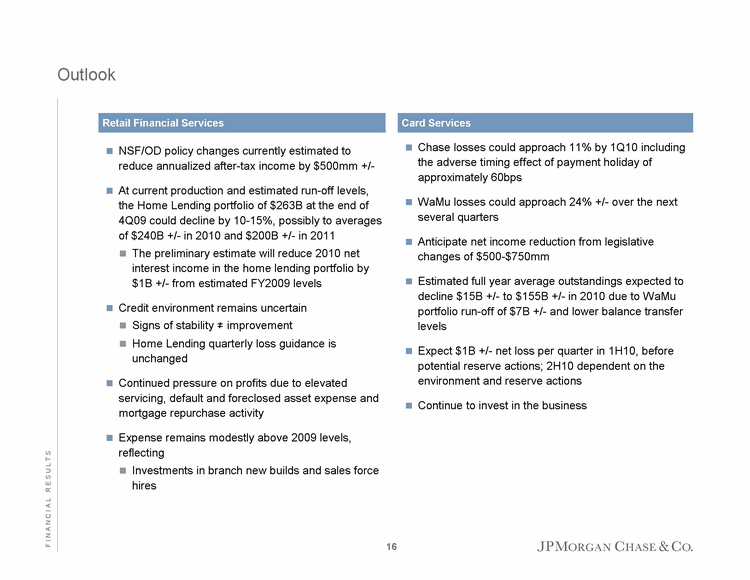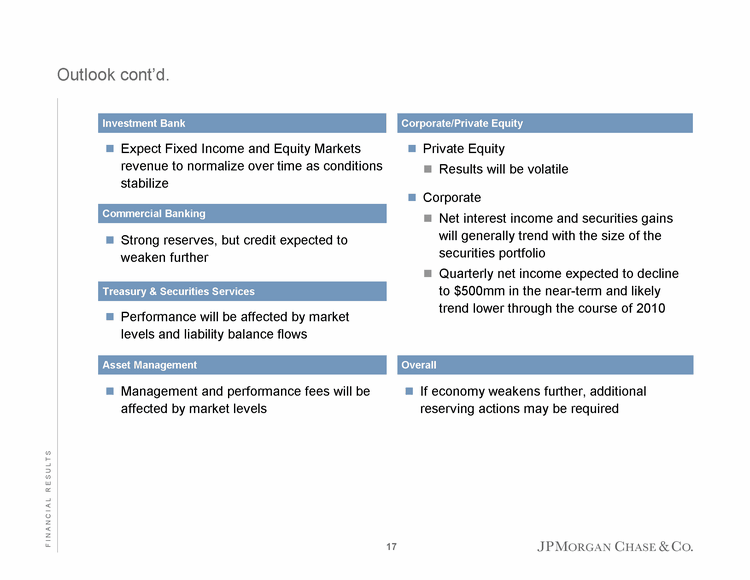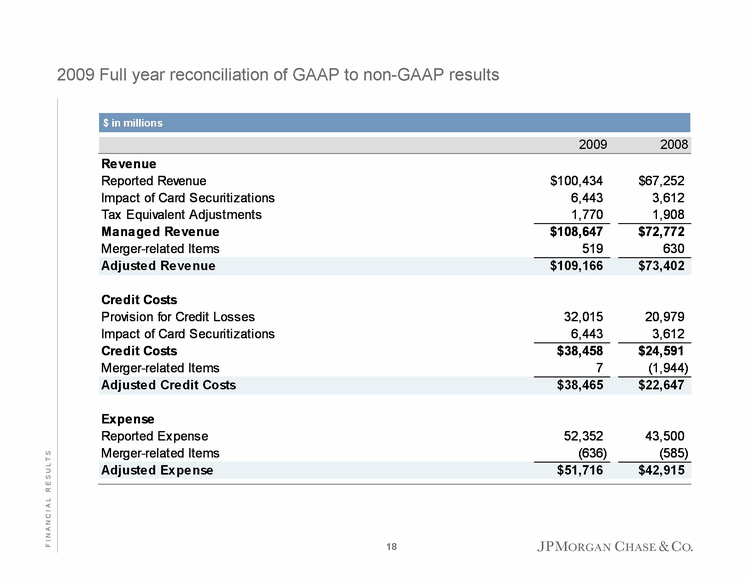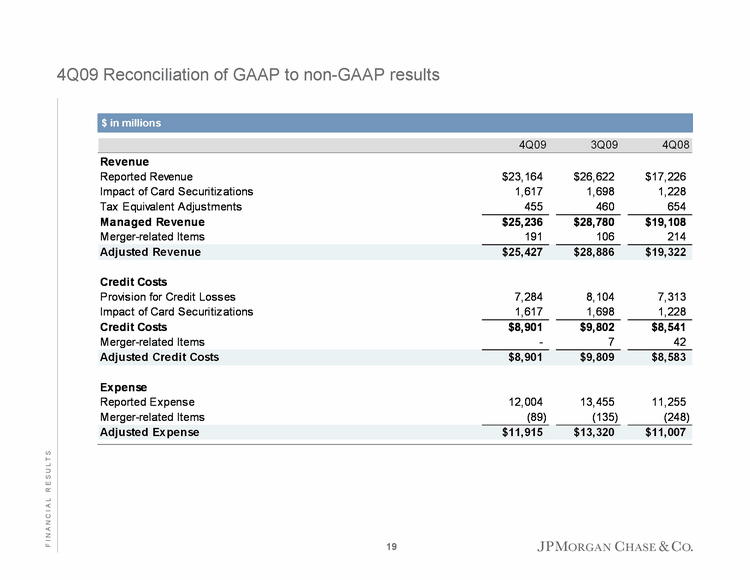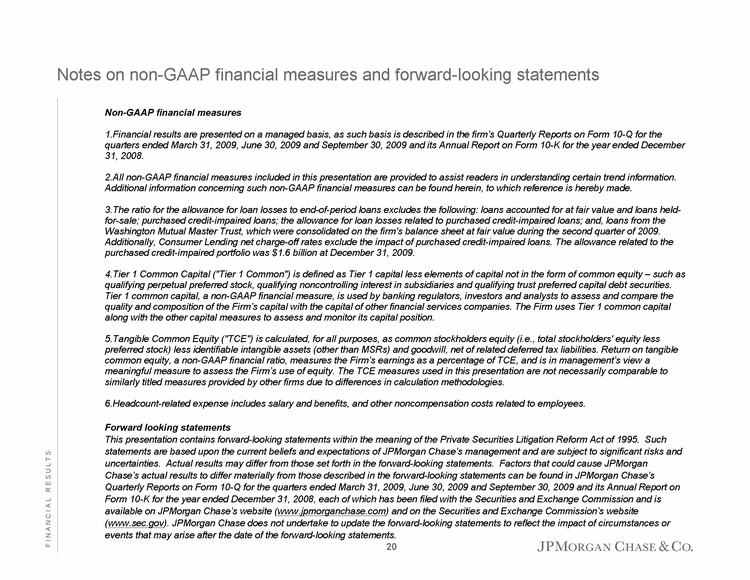| Non-GAAP financial measures Financial results are presented on a managed basis, as such basis is described in the firm's Quarterly Reports on Form 10-Q for the quarters ended March 31, 2009, June 30, 2009 and September 30, 2009 and its Annual Report on Form 10-K for the year ended December 31, 2008. All non-GAAP financial measures included in this presentation are provided to assist readers in understanding certain trend information. Additional information concerning such non-GAAP financial measures can be found herein, to which reference is hereby made. The ratio for the allowance for loan losses to end-of-period loans excludes the following: loans accounted for at fair value and loans held- for-sale; purchased credit-impaired loans; the allowance for loan losses related to purchased credit-impaired loans; and, loans from the Washington Mutual Master Trust, which were consolidated on the firm's balance sheet at fair value during the second quarter of 2009. Additionally, Consumer Lending net charge-off rates exclude the impact of purchased credit-impaired loans. The allowance related to the purchased credit-impaired portfolio was $1.6 billion at December 31, 2009. Tier 1 Common Capital ("Tier 1 Common") is defined as Tier 1 capital less elements of capital not in the form of common equity - such as qualifying perpetual preferred stock, qualifying noncontrolling interest in subsidiaries and qualifying trust preferred capital debt securities. Tier 1 common capital, a non-GAAP financial measure, is used by banking regulators, investors and analysts to assess and compare the quality and composition of the Firm's capital with the capital of other financial services companies. The Firm uses Tier 1 common capital along with the other capital measures to assess and monitor its capital position. Tangible Common Equity ("TCE") is calculated, for all purposes, as common stockholders equity (i.e., total stockholders' equity less preferred stock) less identifiable intangible assets (other than MSRs) and goodwill, net of related deferred tax liabilities. Return on tangible common equity, a non-GAAP financial ratio, measures the Firm's earnings as a percentage of TCE, and is in management's view a meaningful measure to assess the Firm's use of equity. The TCE measures used in this presentation are not necessarily comparable to similarly titled measures provided by other firms due to differences in calculation methodologies. Headcount-related expense includes salary and benefits, and other noncompensation costs related to employees. Notes on non-GAAP financial measures and forward-looking statements Forward looking statements This presentation contains forward-looking statements within the meaning of the Private Securities Litigation Reform Act of 1995. Such statements are based upon the current beliefs and expectations of JPMorgan Chase's management and are subject to significant risks and uncertainties. Actual results may differ from those set forth in the forward-looking statements. Factors that could cause JPMorgan Chase's actual results to differ materially from those described in the forward-looking statements can be found in JPMorgan Chase's Quarterly Reports on Form 10-Q for the quarters ended March 31, 2009, June 30, 2009 and September 30, 2009 and its Annual Report on Form 10-K for the year ended December 31, 2008, each of which has been filed with the Securities and Exchange Commission and is available on JPMorgan Chase's website (www.jpmorganchase.com) and on the Securities and Exchange Commission's website (www.sec.gov). JPMorgan Chase does not undertake to update the forward-looking statements to reflect the impact of circumstances or events that may arise after the date of the forward-looking statements. 20 F I N A N C I A L R E S U L T S |
